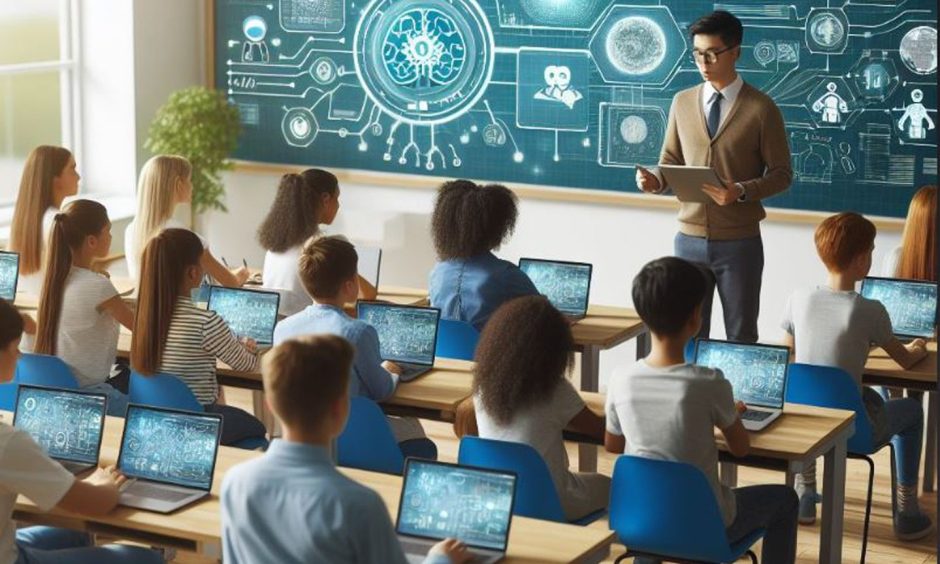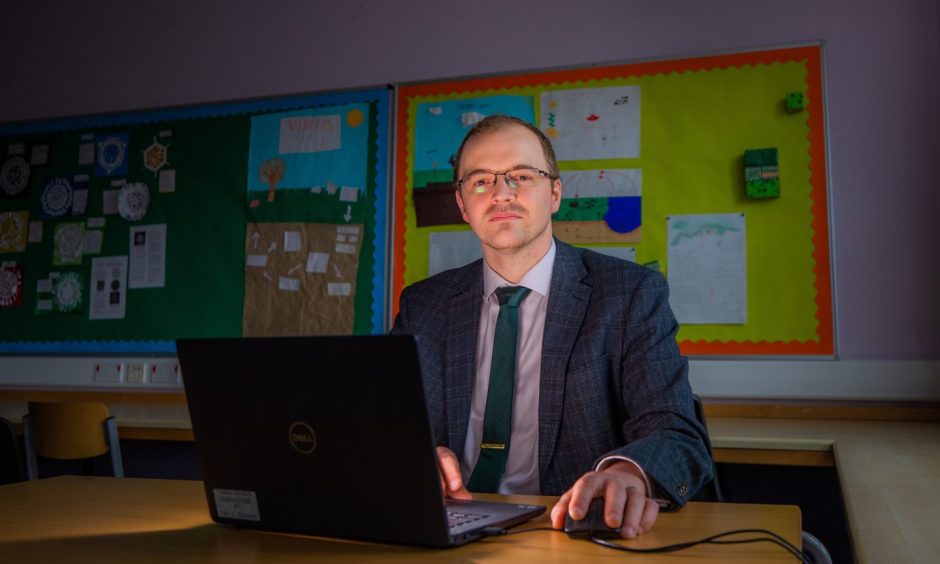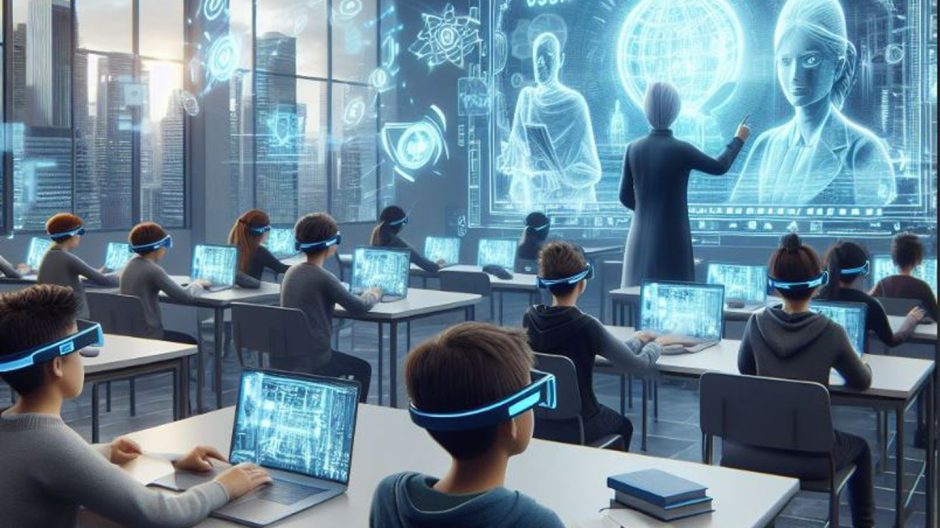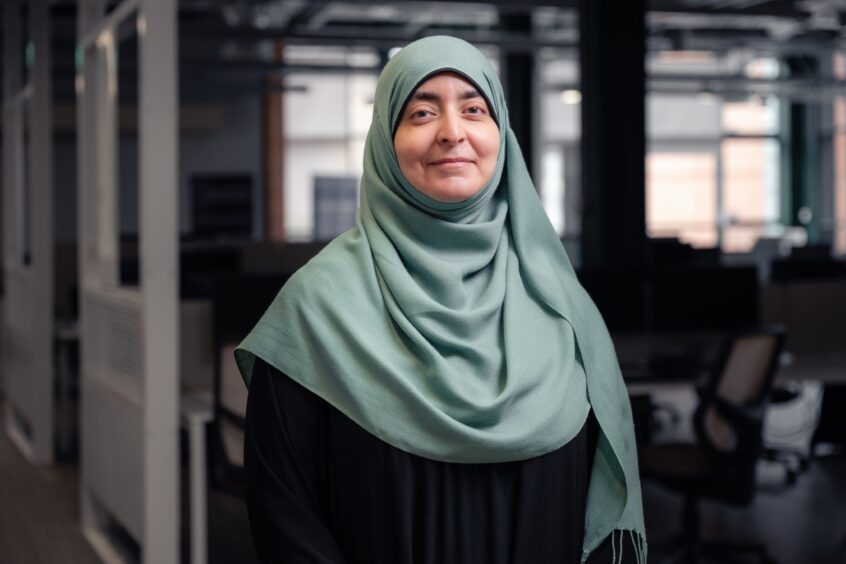
Talk about schoolchildren using AI tools like ChatGPT and people think of the potential for cheating in homework.
But that’s not among the big issues we should be focussing on around artificial intelligence in education according to leading thinkers in the field.
Chris Ranson, of Dunblane High School, is among the more well-informed teachers on the emerging technology.
The Stirling secondary is seen as one of Scotland’s early adopters of AI and Chris is its AI integration lead.
He reckons we need to control the narrative on AI in schools and ensure it reaffirms the value of human thinking and human education.
He says: “Generative AI will be a hugely positive thing in our society if we get the right grasp of it.”
Most young people he has asked are already using generative AI, most commonly Snapchat’s MyA chatbot.
Yes, some pupils have passed off AI-generated output as their own for school assignments, he says.
But this could be a short term problem, he reckons, and countered by a change in assessment methods which is already in the post for Scotland.
The fact young people are already being exposed to such “radically powerful technology” makes instruction on the topic necessary, says Chris.
“It would be a mistake to assume uncritically encouraging [AI’s] use in schools is a good thing, but also a mistake to pretend a technological revolution is not currently underway.”
What is AI?
AI is not new, the term first coined in the 1950s.
Alexa uses AI. AI is the algorithms which determine your social media feed. AI organises photos on your mobile phone into albums like ‘snow days’ or ‘at the beach’.
AI is used day-to-day in health care, finance, retail, entertainment.
Generative AI – they type you can ask to write an essay, answer a question, create a picture – began to really take off around 18 months ago.
This includes chatbot ChatGPT, digital assistant Microsoft Copilot and image generators DALL-E and MidJourney.
All of these and many more are already in common use, and the technology is evolving rapidly.
I used Copilot on my laptop to aid research for this article – double-checking facts, of course – and DALL-E3 to produce the images at the top and above.
Chris says: “Generative AI will be a defining factor in the future of everyone in Scotland.
“The exponential effects of this technology are beginning to be felt across many industries and we will all be the benefactors of this, as well as the likely inheritors of unintended consequences.”
So both teachers and pupils need to be aware of both the benefits and the risks.
What could AI be used for in schools?
Lesson planning, personalised feedback, producing visual aids, graphs or question banks are all jobs which could be done by AI, Chris says.
AI can make it easier for us to use computers so that we speak to them rather than clicking through options. The computer learns us rather than us having to learn how to use it.
Pupils can use it for research and project-based learning.
What are the drawbacks of AI?
Herein lies one of the problems of generative AI. Accuracy.
“Unless one already knows about a subject, they cannot be sure if generative AI is generating false information,” says Chris.
Tools can produce the wrong answer to numerical problems, for example, yet confidently explain how they reached it.
That is among the key messages Chris conveys when he speaks to teachers and pupils about AI.
He says: “Generative AI cannot be trusted. By its nature its job is to generate content and often it will do this without much regard to truth or validity.”
Also he warns people that every conversation with a chatbot is public, saved in a database somewhere.
A cognitive crutch?
Chatbots will be influenced by bias and groupthink, shaped over time by large populations of people using the same tools.
In terms of security, safety features of generative AI can be bypassed. Production of sexual and violent material is another concern, says Chris.
But his biggest worry is that freely introducing generative AI into the classroom may create a “cognitive crutch for pupils who are in the process of learning how to learn”.
He says: “This concern may prove to be as irrational as saying the internet would damage the education of young people.
“But until we have some evidence one way or the other, I am cautious about introducing a tool which offloads much of the critical thinking a young person develops in school; critical thinking which they then can use in all walks of life.”
How has AI been used so far in Dunblane High School?
For this reason and others, Chris has shied away from promoting its use in Dunblane High School.
Chris says: “Staff and pupils both have had a similar mix of curiosity and caution regarding the use of AI.
“Some teachers have used it for the production of learning materials, for example, generating question banks or images, others have used it to produce content for the pupils to critically analyse.”
While he reckons its too early to assume generative AI will benefit classroom learning, Chris reckons teachers need to be coached in its possibilities.
And even the most technophobic among them may be pleasantly surprised.
He says: “Teachers who have struggled to use current software systems will not want to get into the nitty gritty of generative offerings.
“However, if generative AI possibilities are allowed air to breathe then it should appear so attractive to such teachers that they actively want to use it.
“For example, if you could say to a teacher you no longer have to click through all the various options and menus required to complete online activities, be it content creation or marking, then even the more technologically weary would be interested potentially.”
AI at Abertay University for the future workforce
Dr Salma ElSayed uses AI in her classes in at Abertay University School of Design and Informatics.
She reckons there’s an untapped potential to exploit for teachers.
“We could use AI in the classroom for demonstrative purposes, for example explaining complex problems in an easy way. We could ask AI to do visualisations, make visual aids to help explain things.
“We can rely on AI to do tasks relatively quickly, like summarising texts, plotting graphs, translating text.
“There are a lot of exploitations we haven’t even touched on yet.”
Salma says we remain at an “early stage of being fascinated by how this is going” but we need to tread cautiously.
“We always tell our students be careful because it’s not reliable, it doesn’t guarantee the factual information is correct.”
Salma teaches students how to use generative AI. And she believes that skill will be vital when they join the workforce.
“When they graduate most employers will expect them to know generative AI and how to use it, even if it’s not the discipline of the company.
“We teach our students it’s important we embrace it but we have to use it in an ethical way.”
Where is AI-used prohibited for schoolchildren?
Use of AI was temporarily banned in some Australian schools. Schools in some American states also banned it.
Here pupils are forbidden by the Scottish Qualifications Authority from using or referencing AI tools in coursework.
A spokesperson said: “SQA recognises that artificial intelligence technology and tools present great opportunities and substantial challenges for Scotland’s education community.
“That’s why we have provided clear guidance and leadership to protect the credibility of assessment and qualifications.
“We will continue to engage regularly and closely with teachers and learners and with education partners to ensure our guidance and policies keep pace with the rapid advances in AI capability and adoption.”
AI in a new Scottish education system
The potential for AI to disrupt the current qualification system was considered in the Hayward review of qualification and assessment reform.
The review report recommends reform of Scotland’s exams-based system. These include scrapping fourth year exams and different assessment methods for Highers and Advanced Highers.
It recommends the Scottish Government convene a cross sector commission on AI in education as a matter of urgency.
Teachers, it says, should be supported in making the best of tools such as ChatGPT, and coursework tasks made compatible with AI developments.















Conversation